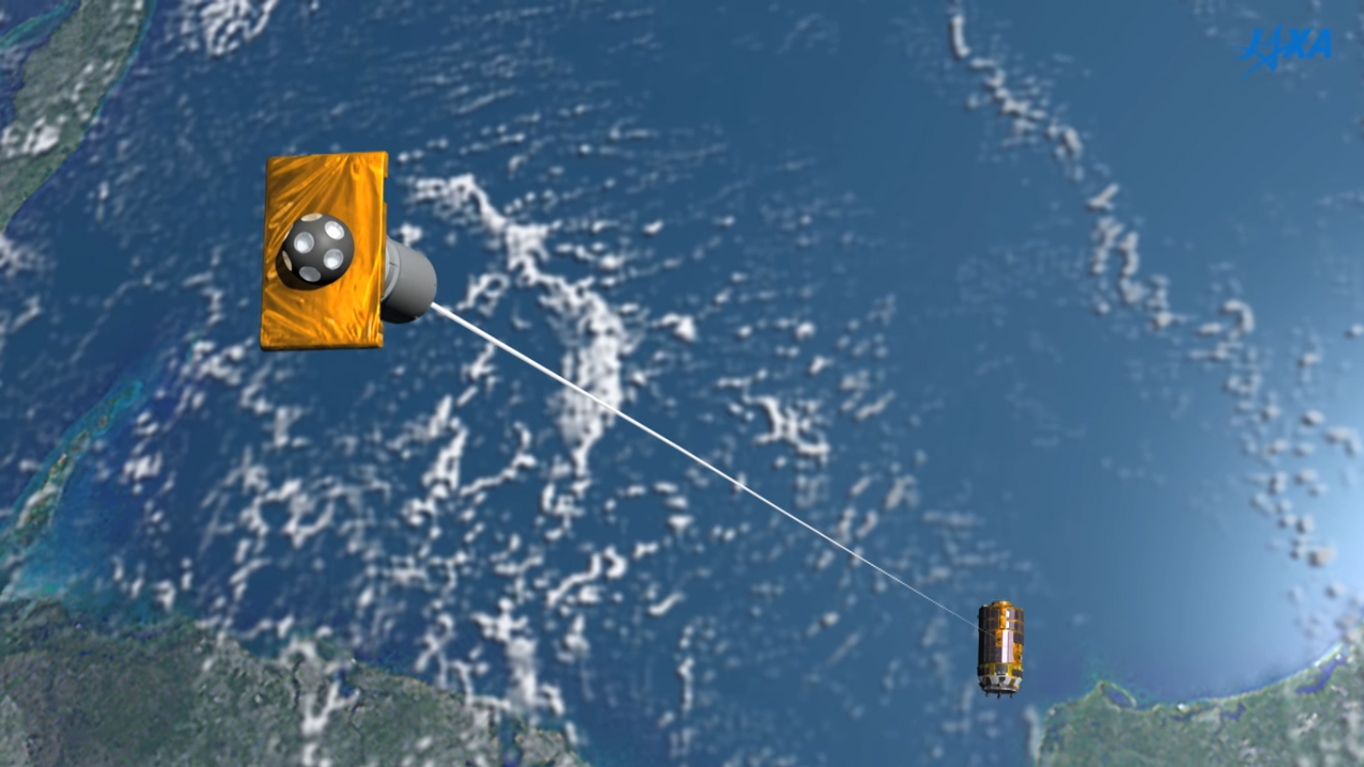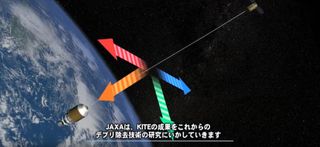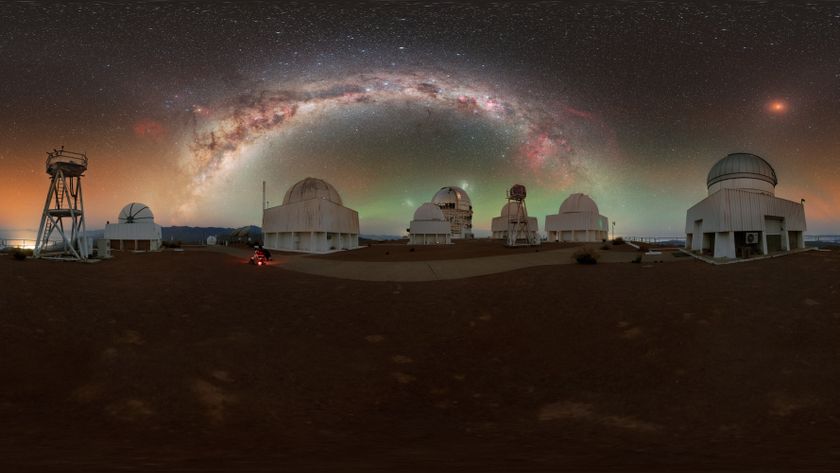Space Junk Solution? Japan Would Use a Tether to Nab Debris & Destroy It

The Japanese space agency will soon be testing a new technology that would use a roughly half-mile-long tether to grab large pieces of space debris and dispose of them.
The proposed technology (first announced in 2014) would include a spacecraft that would deploy a 700-meter-long (2,296 feet) electrodynamic tether (EDT) and guide it toward a piece of space junk. The tether would latch onto the orbiting hunk of trash, and the operating spacecraft would then drag the debris down into the incinerator of Earth's atmosphere (causing the operating spacecraft to burn up as well).
A prototype system called the Kounotori Integrated Tether Experiments (KITE) arrived at the International Space Station on Dec. 12. That system will allow engineers to test the mechanisms that propel the tether when it is deployed in space.. [Worst Space Debris Events of All Time]
The Japan Aerospace Exploration Agency, or JAXA, released a brief description of the tether technology, as well as an animated video illustrating the details of the tether and the spacecraft — unfortunately for some of us, it's subtitled in Japanese only.
Space debris, or "space junk," is becoming an increasingly large problem for space agencies and private companies. Even small pieces of space debris, when moving fast enough, can tear through satellites and human habitats such as the International Space Station; a collision with space debris may have been responsible for the loss of a Japanese science satellite earlier this year.
In 2013, more than 500,000 pieces of space junk were being tracked by space agencies, according to NASA. That includes more than 21,000 pieces of space trash larger than 4 inches (10 centimeters) in size, and half a million bits of junk between 0.4 inches and 4 inches (1 cm and 10 cm).
Agencies aren't just worried about space debris colliding with working satellites — collisions among large pieces of debris can create showers of smaller pieces, which are more difficult to track.
Get the Space.com Newsletter
Breaking space news, the latest updates on rocket launches, skywatching events and more!
The EDT spacecraft will target large pieces of space junk, ranging in size from a few hundred kilograms to a few tons (roughly 400 lbs. to about 4,000 lbs.), a JAXA representative told Space.com in an email.
The trick with this type of system will be figuring out how to attach the tether to an uncontrolled, orbiting piece of debris. There are various systems on the proposed spacecraft that would allow operators to control and monitor the position of the tether relative to the piece of space junk, including a current running through the tether itself. Once the tether has identified its target, it will initially be directed toward the space junk using GPS, and, as it gets closer, operators will use optical cameras to guide it, the representative said.

Application of the technology to a real mission could take place as early as the mid-2020s, a JAXA representative told Space.com.
This isn't the first time a tether has been proposed as a method of cleaning up space junk, according to the website for NASA's Orbital Debris Program Office. Nets are also a popular choice.
"Many different methods for remediation of the orbital debris environment have been proposed over the years," according to the website. "These include the use of lasers, electro-dynamic or momentum exchange tethers, tugs, drag enhancement devices, and other, more exotic methods."
Follow Calla Cofield @callacofield. Follow us @Spacedotcom, Facebook and Google+. Original article on Space.com.
Join our Space Forums to keep talking space on the latest missions, night sky and more! And if you have a news tip, correction or comment, let us know at: community@space.com.

Calla Cofield joined Space.com's crew in October 2014. She enjoys writing about black holes, exploding stars, ripples in space-time, science in comic books, and all the mysteries of the cosmos. Prior to joining Space.com Calla worked as a freelance writer, with her work appearing in APS News, Symmetry magazine, Scientific American, Nature News, Physics World, and others. From 2010 to 2014 she was a producer for The Physics Central Podcast. Previously, Calla worked at the American Museum of Natural History in New York City (hands down the best office building ever) and SLAC National Accelerator Laboratory in California. Calla studied physics at the University of Massachusetts, Amherst and is originally from Sandy, Utah. In 2018, Calla left Space.com to join NASA's Jet Propulsion Laboratory media team where she oversees astronomy, physics, exoplanets and the Cold Atom Lab mission. She has been underground at three of the largest particle accelerators in the world and would really like to know what the heck dark matter is. Contact Calla via: E-Mail – Twitter











